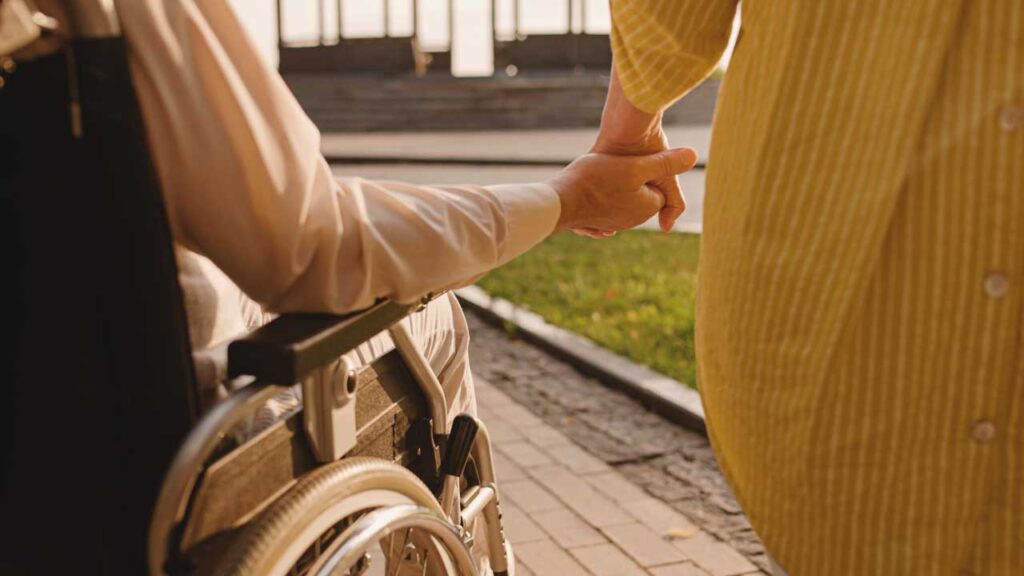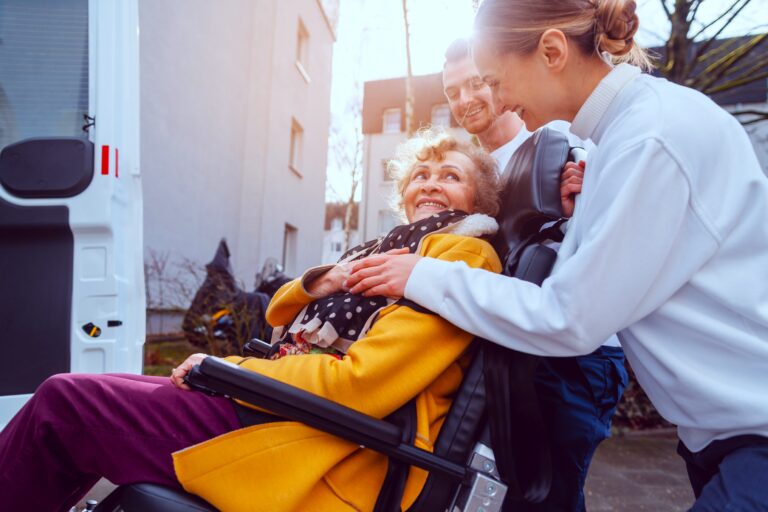Can you imagine the scenario in which the simple task of leaving the house or going to the kitchen becomes a challenge? Reduced mobility can affect any of us, whether due to an accident, a health condition or something as natural as aging.
In this article, we’ll explore what it really means to have limited mobility, the obstacles that arise and the solutions to ensure accessibility, without forgetting the fundamental rights that everyone should have in order to live without barriers.
What does reduced mobility mean?
This condition describes the difficulty or limitation of movement that can arise temporarily or permanently. The affected person may have difficulty walking, standing, sitting or performing daily tasks independently. The causes of this limitation vary and can include anything from chronic illnesses and injuries to ageing or temporary conditions:
- Older age: aging can lead to a decrease in muscle strength and flexibility, making movements slower and more difficult
- Chronic diseases: conditions such as arthritis, multiple sclerosis or diabetes can affect the joints, muscles and nerves
- Injuries and accidents: broken bones, surgery or serious injuries can result in temporary or permanent reduced mobility
- Pregnancy, toddlers or obesity: many temporary situations can also lead to walking difficulties.
It’s important to note that people who suffer from reduced mobility don’t always have obvious problems getting around. A person who has had surgery on their hands, for example, may have difficulty using their hands to perform simple tasks, even though they can walk normally.
Rights of people with reduced mobility
- Access to specialized information. The right to obtain information on rights, benefits and duties from Inclusion Counters, the National Institute for Rehabilitation (INR) or Social Security centers.
- Priority service. People with a degree of disability equal to or greater than 60% are entitled to priority service in public and private services, except in specific situations
- Right to complaints and grievances. Possibility of filing complaints in cases of discrimination or lack of accessibility, with the support of responsible officials.
- The Most Accompanied Person Regime. It allows a person with a disability to be assisted by another person to guarantee the defense of their rights, without conflicts of interest
- Allocation of support products. Access to products and equipment to compensate for mobility or activity limitations, with simplified financing
- Support for teaching and training. The right to an inclusive education and adequate support for children and young people with disabilities, guaranteeing active participation in the school community
- Access to the job market. Specific measures to support disabled people’s access to employment, including quotas and support for integration into the labor market
- Rights in the workplace. Possibility of requesting adjustments to working hours, adaptations to the workplace and absences for medical treatment without prejudice.
- Public transport rights. Priority access and reserved seats on public transport, with assistance during boarding, disembarking and travel
- Independent Living Support Model. Personal assistance for day-to-day activities, such as hygiene, food and travel, with a view to greater autonomy and social inclusion.
How to promote accessibility
Accessibility is the key to enabling everyone, regardless of their limitations, to live independently and fully. The first step is to ensure that spaces, whether public or private, are adapted to eliminate the physical barriers that hinder mobility.
At home
Adapting a home for a person with reduced mobility doesn’t have to be a difficult or expensive task. A few simple changes can make all the difference:
- Large spaces. Make sure furniture doesn’t block the way. Wide doorways and unobstructed corridors are essential, especially for those who use wheelchairs or other mobility devices
- Adapted bathroom. Installing grab rails in the shower stall or next to the toilet, using non-slip floors and adjusting the height of the sink are all changes that can make the home safer
- Accessible kitchen. Lower benches or benches without cupboards underneath allow wheelchair users to maneuver easily.
On public transport
Accessibility in public transport is also essential to ensure that everyone can get out of the house easily and safely. Accessibility laws in Portugal, such as
- Adapted vehicles. Buses with ramps and seats reserved for wheelchairs
- Accessible signage. Sound and visual signals at stops and inside transport for people with sensory disabilities
- Stations and platforms. Ramps, elevators and escalators must be present to facilitate access for anyone.

In public and private buildings
Law 46/2006 guarantees that public and private buildings, whether new or refurbished, are adapted for accessibility. This includes:
- Access ramps: to eliminate stairs and allow people with reduced mobility to move around more easily
- Elevators and wide doors: ensuring that anyone can move freely through the space
- Adapted toilets: so that everyone can use the space with the same dignity and autonomy.
Improving quality of life: some tips
Although adapting environments is fundamental to improving the quality of life of people with reduced mobility, taking care of physical and emotional health and well-being as a whole is essential to increasing autonomy and comfort. Here are some practical tips to make everyday life easier and more enjoyable:
- Practicing adapted physical exercises such as aqua aerobics, pilates or yoga helps to improve muscle strength, flexibility and mobility.
- Maintaining a healthy and balanced diet is important for general health and prevents diseases that can aggravate mobility limitations
- Seeking emotional support and taking part in support groups or therapies is an excellent way to deal with the emotional issues related to reduced mobility
- Investing in assistive technologies can increase independence and help you carry out daily tasks more efficiently
- Maintaining a regular rest and sleep routine is also very important, as adequate rest contributes to physical and mental recovery
- Having a social support network, made up of family and friends, gives you the support you need to face your daily challenges more calmly and safely.




